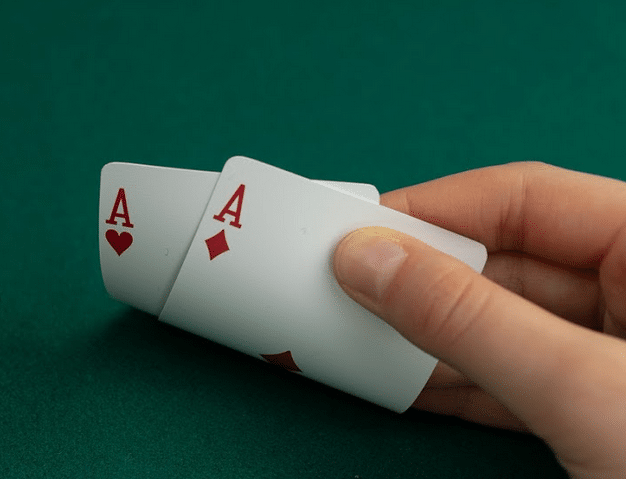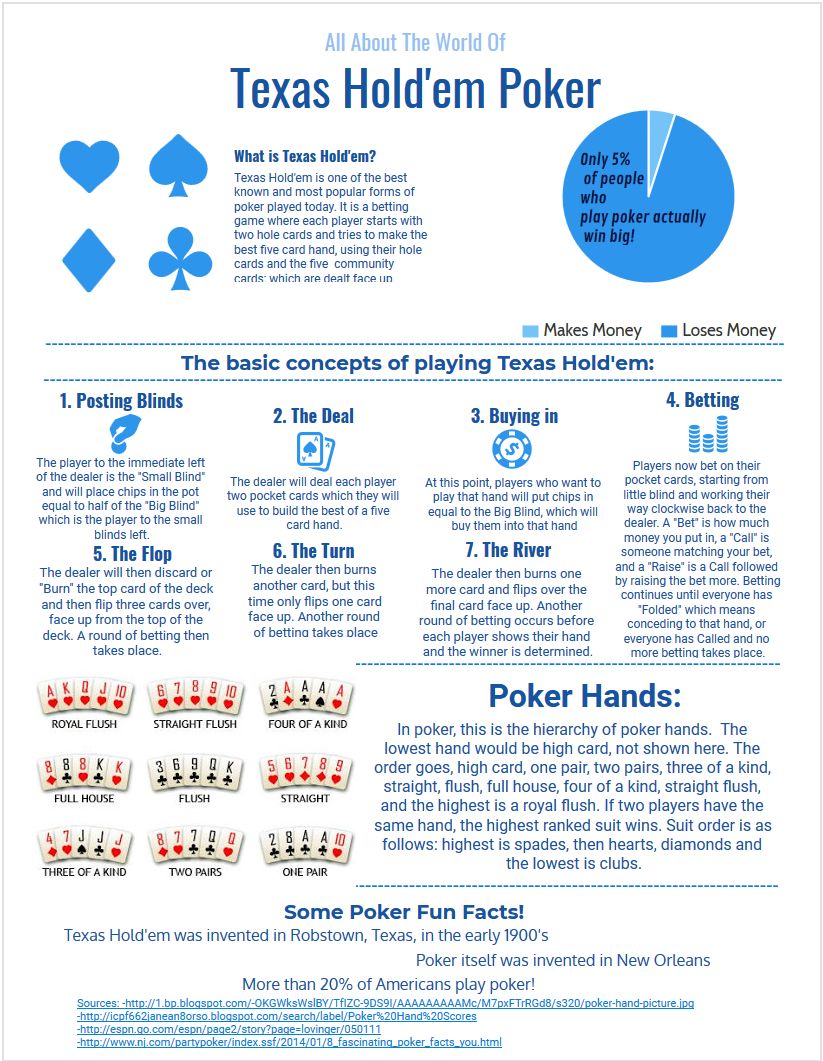Texas Holdem Pot Limit Rules
Texas Hold’em is the world’s most popular form of poker, thanks in large part to the World Series of Poker and other televised poker tournaments that have brought the game to the masses. Texas Hold’em is both easy to play, making it ideal for those just learning about poker, and filled with incredible depth and strategy, making it a game that challenges even professional players. If you need a refresher on the Texas Hold’em Rules, this article should help you get started in this great poker game.
Games of Texas Hold’em may be played with many different betting structures. Common ones include Limit Hold’em, where the amount a player may bet is set by the rules of the game, and No Limit Hold’em, where players are free to bet as much of the money they have at the table as they wish at any time. (In Texas Hold'em, you build a hand with two hole cards and three community cards) Card Game Rules Texas Hold’em Poker is a casino type game where the objective is to win the best hand out of a group of players. Players are initially given two cards, called “hole” cards, that they hold throughout the game (hence the name). They then try to make the best five card hand out of their.
Texas Hold’em Basic Poker Rules
Texas Hold’em is played with a standard deck of 52 cards. The object of the game is to make the best possible five-card poker hand using any combination of the two card’s in a player’s hand (known as the “hole cards”) and the five community cards that the dealer places in the middle of the table, which can be used by all players. The standard hand rankings are used, as follows (from best to worst):
- Straight Flush: Any five cards of the same suit and consecutive rank; the best of these hands, AKQJT of a single suit, is known as a Royal Flush. For these and regular straights, aces may be played as high or low cards.
- Four of a Kind: Any four cards of the same rank.
- Full House: Any three cards from a single rank combined with a pair from a different rank (i.e., TTT55).
- Flush: Any five cards of the same suit.
- Straight: Any five cards of consecutive ranks (i.e., 34567).
- Three of a Kind: Any three cards of the same rank.
- Two Pair: Any two pairs of cards from the same ranks (ie, 5599A).
- One Pair: Any two cards of the same rank.
- High Card: Hands that do not fit any of the above categories are ranked based on the highest card in their hand (aces are high), then by the second highest card, and so on.
Let’s look at these poker hand rankings again visually.

Typically, a game of Texas Hold’em will be played with anywhere from two to ten players at a table. Games with more players are possible, since each player only needs two cards for themselves, but games with more than 11 players at a single table are rare.
Games of Texas Hold’em may be played with many different betting structures. Common ones include Limit Hold’em, where the amount a player may bet is set by the rules of the game, and No Limit Hold’em, where players are free to bet as much of the money they have at the table as they wish at any time. Other structures include Pot Limit Hold’em and Spread Limit Hold’em.

Texas Hold’em Rules: Flow of a Hand
At the beginning of the first hand of play, one player will be assigned the dealer button (in home games, this player will also traditionally act as the dealer for that hand). The player immediately to the left of the button must post the small blind, while the player two seats to the left of the button must post the big blind. The size of these blinds is typically determined by the rules of the game. If any ante is required – common in a tournament situation – players should also contribute it at this point.
Once all blinds have been posted and antes have been paid, the dealer will deal two cards to each player. Each player may examine their own cards. The play begins with the player to the left of the big blind. That player may choose to fold, in which case they forfeit their cards and are done with play for that hand. The player may also choose to call the bet, placing an amount of money into the pot equal to the size of the big blind. Finally, the player can also choose to raise, increasing the size of the bet required for other players to stay in the hand.
Moving around the table clockwise, each player may then choose to take any of those options: folding, calling the current bet, or raising the bet. A round of betting ends when all players but one have folded (in which case the one remaining player wins the pot), or when all remaining players have called the current bet. On the first round of betting, if no players raise, the big blind will also have the option to check, essentially passing his turn; this is because the big blind has already placed the current bet amount into the pot, but hasn’t yet had a chance to act.
Assuming there are two or more players remaining in the hand after the first round of betting, the dealer will then deal out three community cards in the middle of the table. These cards are known as the flop. Play now begins, starting with the first player to the left of the dealer button (if every player is still in the hand, this will be the small blind). Players have the same options as before; in addition, if no bet has yet been made in the betting round, players have the option to check. A round of betting can also end if all players check and no bets are made, along with the other ways discussed above.
If two or more players remain in the hand after the second round of betting, the dealer will place a fourth community card – known as the turn – on the table. Once again, a round of betting ensues, using the same rules outlined above. Finally, if two or more players are still around after the third round of betting, the dealer will place the final community card – the river – on the table. One last round of betting will commence.
After this final round of betting, all remaining players must reveal their hands. The player with the best hand according to the hand rankings above will win the pot. If two or more players share the exact same hand, the pot is split evenly between them. After each hand, the button moves one seat to the left, as do the responsibilities of posting the small and big blinds.
Because it's a little bit more complicated than a standard Limit of No-Limit betting structure we've put together a specific article on How to Calculate the Pot Bet to help you understand how it's done.
The simple rule for making a pot-size bet is:
- You can raise the amount that is in the pot after you have called the previous bet.
Here are a few examples to make things clearer.
How to Make a Pot Bet in Poker -- Examples
Pot Bet Example 1
Situation: There's $10 in the pot. You're first to act.
How much can you bet? You can bet $10.
Simple, right? Now we'll make it a little harder.
Pot Bet Example 2
Situation: There's $10 in the pot and a player has bet $3.
How much can you bet? To calculate your maximum bet, first pretend that you call that last bet. The total pot then contains 10 + 3 + 3 = $16.
This is your maximum raise. With the $3 call your total maximum bet would then be $19.
Still with us? Now let's make it a little more complicated.
Pot Bet Example 3
Situation: There's $10 in the pot, one player has bet $3 and another player has raised to $10.
How much can you bet? First, pretend that you call the last bet of $10. The pot then contains 10 + 3 + 10 + 10 = $33.
Your pot raise is $33 and your total bet is $43.
Got it? Even if you're struggling a bit to get your mind around it, don't give up. There are a couple of smart tricks you can use to make it even easier.
If you want to play Pot-Limit poker (like, say, Pot-Limit Omaha) live, you should definitely learn them as you'll need to calculate your pot bets on the fly with a table of other players watching.
If you play your Pot-Limit Omaha online, though, you'll get some help with the betting functions.
How to Make a Pot Bet - Tips & Tricks
If you're playing Pot-Limit poker on online poker sites, the poker client will tell you exactly how much you're allowed to bet. In live poker, the common way to do this is to just say the word 'pot' out loud before you bet.
This establishes that you intend to bet the maximum. Then you can take your time to figure out how much that is.
The Simple 3x Rule for Pot Bets in Poker
Here's another really helpful trick that you can use to calculate the correct size of a pot bet:
- To get your maximum bet, multiply the last bet by three and add all other bets, including the original pot.
Does that sound insane to you? That's probably a sane reaction. But the truth is, it actually works!
Let's go through the same examples from above again, this time applying the 3x Rule.
Texas Holdem Pot Limit Rules Card Game
Example 1
Situation: There's $10 in the pot. You're first to act.
How much can you bet? So, 3x the last bet is zero (no one has bet yet). Add the rest of the bets including the pot, which amounts to $10.
Example 2
Situation: There's $10 in the pot and a player has bet $3.
How much can you bet? 3x the last bet is 9 (3 x 3 = 9). Add $10 from the original pot and you get $19.
Example 3
Situation: There's $10 in the pot, one player has bet $3 and another player has raised to $10.
Texas Holdem Pot Limit Rules For Beginners

How much can you bet? 3x the last bet (3 x 10) is $30. Add $10 + $3 and you get $43.
--------------------
Texas Holdem Pot Limit Rules 2019
Luckily, this simple rule of thumb for pot bets works just as well in the first betting round when the blinds are on the table.
If the small blind is $1 and the big blind $2, the max bet is (3 x 2) + 1 = 7. With two limpers before you, the pot bet is (3 x 2) + 1 + 2 + 2 = 11.
Read More:
Texas Holdem Pot Limit Rules Regulations
More Poker Games Rules
Poker Tools: